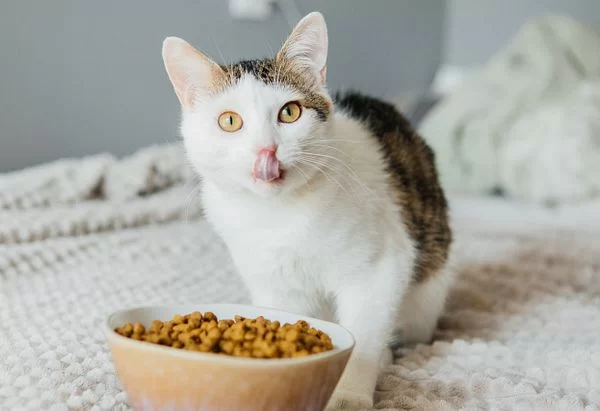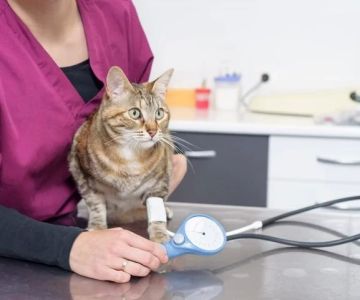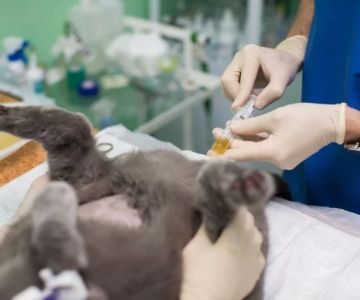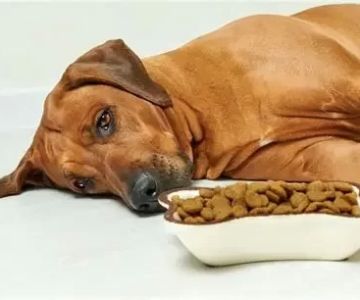Choosing the Right Cat Food: My Journey as a Cat Owner
When I first adopted my cat, Whiskers, I found myself overwhelmed by the sheer number of cat food options available in stores. From dry kibble to wet food, grain-free to high-protein, the choices seemed endless. I knew I wanted to provide Whiskers with the best nutrition possible, but I wasn’t sure where to start. I remember standing in the pet food aisle, reading labels, and wondering which brand was truly the best for her. After much research and trial and error, I learned a lot about how to choose the right cat food for my pet, and now I want to share some tips to help other cat owners navigate this decision with confidence.
Understanding Your Cat’s Dietary Needs
Before diving into specific brands, it’s important to understand the dietary needs of your cat. Just like humans, cats have unique nutritional requirements based on their age, weight, activity level, and health status. Whiskers, for instance, is an indoor cat with a relatively low activity level, so I had to find a food that would keep her healthy without leading to obesity.
Cats are obligate carnivores, which means they require a diet high in animal-based protein. I quickly realized that when choosing a cat food, protein should be the first ingredient listed. Cats also need a certain amount of fat in their diet for energy and overall health. Additionally, certain life stages—like kitten, adult, and senior—require different types of nutrition. For example, kittens need more calories and protein for growth, while senior cats might require foods that support joint health and contain fewer calories to prevent weight gain.
1. Look for High-Quality Ingredients
When I started looking at different cat food brands, I learned that not all ingredients are created equal. I became more aware of the ingredients list and began to look for foods that prioritized high-quality protein sources, such as chicken, turkey, or salmon. After all, cats are carnivores, so meat should be the primary source of their nutrition.
What to Avoid in Cat Food
On the flip side, I learned that there are certain ingredients to avoid when selecting a cat food brand. Many lower-quality cat food brands use fillers like corn, soy, and wheat, which provide little nutritional value to cats. These ingredients are often used to bulk up the food at a lower cost, but they don’t support a cat’s nutritional needs. I also steered clear of artificial additives, colors, and preservatives, which are common in less premium brands. Opting for natural, whole-food ingredients gave me peace of mind that I was feeding Whiskers a nutritious diet.
2. Consider the Type of Food: Dry, Wet, or Raw?
Another decision I had to make was choosing between dry, wet, or raw food. Initially, I fed Whiskers dry kibble because it was convenient and easy to store, but I soon realized that cats are not naturally inclined to drink water, and dry food doesn't provide enough moisture. This led me to incorporate wet food into her diet, which helped keep her hydrated.
Benefits of Wet Food
Wet food has a higher moisture content, which is important for maintaining healthy kidney function and preventing urinary tract issues. I also noticed that Whiskers seemed to enjoy the taste and texture of wet food much more than dry kibble. It was a win-win situation—she stayed hydrated, and she was eating something she actually enjoyed. Wet food is particularly beneficial for cats with urinary tract issues or those that are prone to dehydration, which I learned after a visit to the vet.
Dry Food vs. Wet Food
While wet food has its advantages, dry food is still a convenient option. It’s easier to store and can help with dental health by reducing plaque buildup. I found that a combination of both wet and dry food worked best for Whiskers. The dry food provided the crunch she loved, while the wet food kept her hydrated. I also learned that some high-quality dry food brands now add moisture into their kibble, offering a balance of both worlds.
3. Pay Attention to Your Cat’s Health Needs
As I began to understand Whiskers’ dietary needs, I realized that her health status played a significant role in choosing the right food. For example, if your cat has a sensitive stomach, you might want to look for a brand that offers gentle digestion formulas. Whiskers, for instance, had some digestive issues when she was younger, so I opted for a brand that was specifically formulated for sensitive stomachs.
Food for Special Health Conditions
If your cat has specific health conditions like obesity, diabetes, or kidney disease, there are specialized food formulas designed to support these needs. For instance, there are weight management formulas that contain fewer calories and fat, which can help prevent obesity. If your cat has diabetes, it’s important to choose food with a low glycemic index to help control their blood sugar levels. I learned that by choosing the right formula, I could help Whiskers manage her weight and overall health more effectively.
4. Do Your Research on the Brand’s Reputation
Choosing the right cat food brand is not just about the ingredients; it’s also about the brand’s reputation and commitment to quality. I spent a considerable amount of time researching the companies behind the brands I was considering. I looked for brands that have a strong track record of producing high-quality, safe, and nutritious food. Brands that invest in research, sustainability, and sourcing high-quality ingredients tend to stand out.
Look for Brands with Transparency and Accountability
Transparency is key when it comes to selecting a pet food brand. I paid attention to brands that were open about their sourcing, manufacturing processes, and quality control measures. I also looked for brands that had positive reviews from other pet owners and veterinarians. A reputable company will be clear about where their ingredients come from and how their food is made. I made sure to avoid brands that didn’t provide adequate information or had a history of recalls or poor quality control.
5. Experiment and Monitor Your Cat’s Response
Ultimately, no matter how much research I did, I found that trial and error played a part in finding the best food for Whiskers. Every cat is different, and what works for one cat might not work for another. After trying several different brands and formulas, I found that Whiskers thrived on a high-protein, grain-free formula with a mix of wet and dry food. However, she didn’t respond well to certain ingredients in some brands, such as artificial additives, so I switched to a more natural option.
Monitor Your Cat’s Health and Behavior
When switching foods, it’s essential to monitor your cat’s health, coat, weight, and behavior. Whiskers' coat became shinier and healthier when I switched to a high-quality food brand, and she had more energy. If your cat has gastrointestinal issues, such as vomiting or diarrhea, you may need to adjust the food formula accordingly. Pay attention to your cat’s reactions and consult your vet if you notice any changes in their health after changing food.












